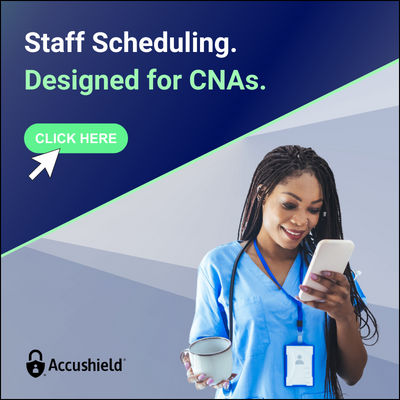A gemba walk is a simple, easy to implement, and effective tool for building engagement and alignment in your community
By Denise Scott
Do you ever have the feeling that staff don’t always follow correct work procedures? Ever get frustrated when a certain policy isn’t followed or a preventable resident incident occurs? Your first reaction may be to blame staff for not working correctly, but oftentimes there is more to the story.
The Gemba Walk
A gemba walk is a simple, easy to implement, and effective tool for building engagement and alignment in your community. It describes the core work of going to the place where work happens — the resident room, the medication room, the kitchen, the central laundry — to understand what is actually happening in an organization. (Gemba means “the actual place” in Japanese, and refers to the physical place where work occurs, i.e. “the floor.”) Once there, the manager must question why things happen as they do, discuss how they might be improved, and explore why problems may be occurring. During this process, it is imperative that the manager is respectful of the work area, the expertise of the people involved in the work, and the people themselves. Remember: Respect for people —especially front-line staff — is key to success with the Lean* process.
A gemba walk might seem similar to the “management by walking/wandering around” practice sometimes advocated by leadership experts. While both activities occur in the place where employees do work, a gemba walk is very, very different. It is purposeful instead of random, and seeks to directly connect with the people and work rather than simply observe and be available.
The Seven Practices of Leading With Respect
A gemba walk addresses seven practices of leading with respect: Challenge, Teach, Listen, Learn, Support, Teamwork, and Go and See. Go and See is not simply about being physically present in the workplace; it involves very purposeful and transformational activities:
-
Challenge: Press employees to think deeply and critically about issues. Encourage a culture of deep thinking and thorough understanding by pushing employees to problem solve rather than doing the work for them.
-
Teach: Give staff the tools and training to engage in their work and address challenges that come up. When you discover that a staff member isn’t aware of a procedure or doesn’t know how to complete a task, take the opportunity to teach them the correct way. Consider that teaching is a very different concept than training. Training describes a process where information is given or provided, whereas teaching describes an interactive process where the recipient of information learns.
-
Listen: Encourage ideas and feedback by listening and responding to staff. Listening involves both being quiet and hearing what the other person is saying as well as responding to let the other person know they were heard. Listening can also be quite difficult, especially when hearing something that is different than what you were expecting. When you are early on the Lean journey, it is crucial to be patient and open to feedback, even if it is uncomfortable to hear, as this will set the stage to building deeper trust with staff.
-
Learn: Staff doing the everyday work are experts in what needs to be done and what challenges are getting in the way. Learn from their experience.
-
Support: Sustain a culture of blame-free problem solving and provide adequate tools and training for employees to do their job without excessive stress or anxiety. If employees appear overworked, provide both immediate assistance in helping them complete their duties as well as longer-term support by investigating root causes.
-
Teamwork: Enable staff to work together as a team. This means both establishing a culture of respect and communication and giving staff time and resources to meet regularly, discuss challenges and create solutions. In addition, work hard to establish a sense of team between line staff and supervisory/ management staff. Everyone’s goal should be to serve the resident, and a strong, functional team requires everyone’s participation.
Going to the place of work is easy. You leave the office and go to the action. But then what? Find out what your next steps should be in the upcoming second part of this series.
*Sean Carey, MHA, LNHA, CDM helps organizations improve performance, align resources, implement technology and innovate current practices. He is the author of Lean for Long-Term Care and Aging Services: A Practical Guide for Driving Improvement, Engagement and Resident-Centered Service. In addition to hands-on experience learning, implementing, and practicing Lean, Sean has Green and Purple Belt Lean Six Sigma training. If you are interested in learning how Sean can improve your organization’s outcomes contact [email protected].








